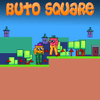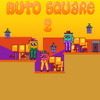1. Democratization of Creativity:
Lowering barriers to entry: Generative AI tools empower individuals without traditional artistic skills to produce high-quality work in fields like writing, illustration, design, and music.
This opens up creative avenues for a broader range of people.
Accessibility: These tools can make creativity more accessible to those with disabilities or limited access to formal education in creative fields.
2. Enhancing Productivity and Efficiency:
Automation of repetitive tasks: AI can automate tedious and time-consuming tasks, such as image editing, background removal, and generating variations of designs, freeing up human creatives to focus on higher-level creative thinking.
Rapid prototyping and ideation: Generative AI allows creatives to quickly generate multiple variations of concepts, explore different styles, and test ideas in minutes, accelerating the creative process.
3. Expanding Creative Possibilities:
New forms of expression: AI tools enable the creation of entirely new forms of art, music, and design that were previously impossible.
Inspiration and co-creation: AI can serve as a creative partner, providing inspiration, generating unexpected ideas, and assisting in the development of complex projects.
4. Transforming Specific Industries:
Visual arts: AI is used for generating images, illustrations, and designs, assisting graphic designers, and even creating AI-generated artworks.
Music: AI can compose melodies, harmonies, soundscapes, and even full compositions in various genres.
Film and gaming: AI is used for generating realistic graphics, character designs, and complex virtual environments, enhancing storytelling and reducing production time.
Writing and journalism: AI can assist with generating different kinds of creative text formats, like poems, code, scripts, musical pieces, email, letters, etc., and it can also be used for summarizing factual topics or creating news reports.
1. The Blurring Lines Between Human and Machine:
Authorship and originality: As AI becomes more sophisticated, it raises profound questions about authorship and originality. If an AI generates a piece of art based on a prompt from a human, who is the true creator? This challenges traditional notions of artistic ownership and expression.
The “human touch”: There’s an ongoing debate about whether AI-generated content can truly capture the “human touch”—the emotional depth, personal experiences, and unique perspectives that human artists bring to their work. While AI can mimic styles and patterns, some argue that it lacks the genuine emotional core of human creativity.
2. The Rise of Hybrid Creativity:
AI as a collaborator: Rather than replacing human creatives, AI is increasingly being seen as a powerful collaborator. Artists, designers, and musicians are using AI tools to augment their own abilities, explore new ideas, and push the boundaries of their creative practice. This leads to a form of “hybrid creativity” where humans and machines work together in a synergistic way.
New creative workflows: Generative AI is leading to the development of entirely new creative workflows. For example, a designer might use AI to generate a range of initial concepts, then refine and customize those concepts using traditional design software. This creates a more iterative and efficient creative process.
3. The Impact on Creative Education:
Adapting curricula: Educational institutions are starting to adapt their curricula to incorporate generative AI tools and concepts. This includes teaching students how to use AI effectively, understanding the ethical implications of AI, and exploring the new creative possibilities that AI offers.
Focus on uniquely human skills: There’s a growing emphasis on developing uniquely human skills that are difficult for AI to replicate, such as critical thinking, complex problem-solving, emotional intelligence, and interpersonal communication.
4. The Challenge of Regulation and Policy:
Copyright law: Existing copyright laws are struggling to keep pace with the rapid advancements in generative AI. There’s a need for new legal frameworks that address issues like ownership, licensing, and fair use of AI-generated content.
Ethical guidelines: There’s a growing need for ethical guidelines and industry standards for the development and use of generative AI in creative contexts. This includes addressing issues like bias, misinformation, and the potential for misuse of AI-generated content.
5. The Evolution of Taste and Aesthetics:
AI’s influence on style: As AI becomes more prevalent in creative fields, it may start to influence our collective taste and aesthetics. AI models are trained on vast datasets of existing content, which could lead to a homogenization of styles or the emergence of new AI-driven aesthetic trends.
The value of human curation: In a world saturated with AI-generated content, the role of human curators, critics, and tastemakers may become even more important. These individuals can provide context, meaning, and critical evaluation of AI-generated work, helping audiences navigate the evolving creative landscape.







